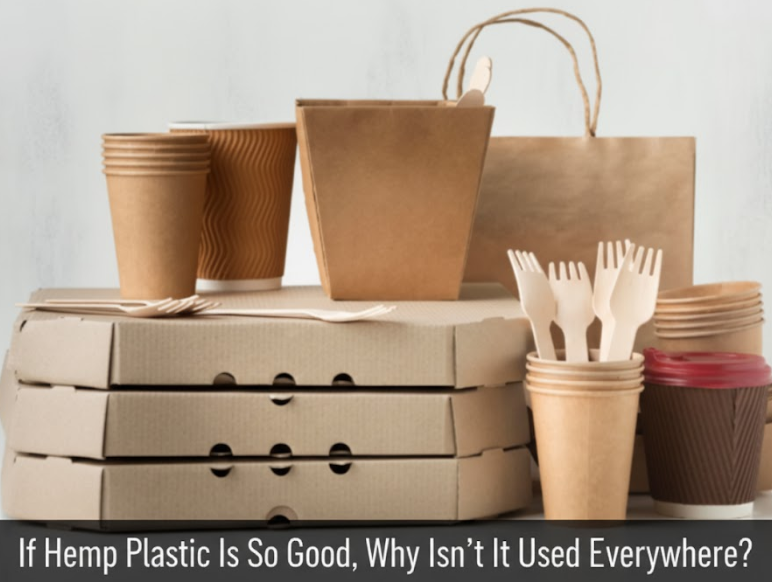What Climate Finance Means for Hemp Startups
The November of 2024 brought great Climate Finance news all the way from Azerbaijan.
Global leaders pledged $300 annually by 2035 at COP29. This is a game changer for sustainable businesses. Hemp startups stand to gain the most.
Here’s why:
Climate Finance aims to move closer to achieving the goals set by the Paris Agreement at COP21. Our arch-enemy is the greenhouse gases causing global warming, especially CO2. We must stop the temperature from rising above 1.5 °C.
On this journey—
Hemp is the closest thing we have to a miracle solution
The crop, as well as the products it can be used to manufacture, can slow down rapid climate change.
Hemp crops absorb more CO2 than they emit. Many crops do this, but hardly any are as effective as hemp.
Hemp can sequester 10-15 tons of CO2 per hectare annually.
Let’s compare it to another carbon-negative crop, a popular choice for making fabric—cotton. Cotton crops can sequester a puny 0.5 to 1 ton of CO2 per hectare annually.
Now, let’s look at how much CO2 is emitted when we produce over 98% of the single-use plastic around us.
All this plastic is petroleum-based. Petroleum extraction emits an unbelievable amount of CO2. Then this petroleum makes its way to plants where it makes plastic. Yes, the transportation emits another ridiculous amount of CO2. Researchers estimate it to be 12.5 million metric tons per year globally.
Plastic manufacturing causes 18.1 billion tonnes of greenhouse gas emissions. This industry alone is responsible for 3.4% of the world’s emissions of greenhouse gases.
Doesn’t seem like a huge chunk? Let’s compare it to aviation which only contributes 1.9% and shipping– 1.8%.
How can hemp plastic solve these problems?
On the one hand, we have fossil fuels. They take millions of years to form and make plastic, which takes hundreds of years to decompose. A cycle that emits a LOT of greenhouse gases.
On the other hand, we have hemp, a low-maintenance crop that doesn’t need much water. It removes CO2 from the atmosphere and makes plastic that decomposes within 3-6 months.
It doesn’t produce CO2 even while it decomposes!
What does this mean for hemp startups?
Hemp startups can use frameworks like the Greenhouse Gas Protocol and Climate Actions Impact Framework (UCAIF) to measure and report the positive climate impact of hemp farming. Julie’s Bicycle Tools can measure benefits beyond carbon emissions.

They can attract climate finance investors by showing that hemp is a sustainable, scalable solution to the climate crisis.
Hemp can make a lot more than plastic (which is such a versatile product on its own).
Hemp fibres can make clothes and shoes; they can also blend well with other fibres like silk and flax. Hemp oil is great for cooking, moisturizing the skin, and making oil-based paint. Hemp seeds can feed birds.
It can even make insulation, paper, and biofuel.
The possibilities for scalability are endless. All these products also promise sustainability. They decompose easily. They do not add to the waste crisis. They do not depend on a non-renewable source like petroleum. This means:
Hemp startups can use the Environmental, Social, and Governance (ESG) criteria to pitch themselves.
Major environmental benefits are obvious—CO2 sequestering, biodegradable products, and less water needs.
These environmental benefits are connected to social and governance benefits.
Hemp can boost rural economies by generating higher income potential for farmers.
A variety of products means a variety of buyers.
Also, the farmers would be growing a crop that needs less investment and water.
It would protect the soil instead of depleting it. Deep roots of the hemp plant prevent soil erosion and boost soil health.
New Hemp Processing facilities can choose to source locally and further help local communities.
Climate Finance investors look for startups that source ethically and involve the stakeholders (employees, farmers, and local communities in decision-making).

What else can hemp startups do?
Hemp startups are not only ideal candidates for receiving financial support for sustainable businesses, green finance initiatives, and renewable project financing. They can use carbon calculators to measure hemp’s carbon sequestration.
They can then sell carbon credits to create new revenue streams.
Tesla is a great example of how much revenue carbon credits can generate. In 2023, the company earned $1.79 billion from carbon credits. Who are the buyers? Huge corporations like Microsoft, Delta Airlines, Disney, Google and Samsung to name a few.
This is the moment for hemp startups. There is no other crop that can have such a multifaceted positive impact on the environment. Hemp is exactly the solution climate finance investors are looking for.
Hemp startups can attract them by strengthening their credibility. They must build meaningful relationships with NGOs and policymakers.
How many crops can you think of that can give you fuel, plastic, and paper? All this while ensuring less waste, saving water, and slowing down global warming.
We can no longer put environmental concerns on the back burner in the name of economic development.
We also cannot afford an economic crisis.
This rapidly evolving world needs an influx of businesses that are both profitable and eco-friendly. These businesses can attract eco-business investment and climate-friendly funding. Hemp startups are exactly that.
Vishal Vivek
Vishal Vivek is the Founder and CEO of Ukhi, a pioneering bio-materials company dedicated to ending plastic pollution by converting agricultural waste into high-performance compostable polymers. With a background in sustainable entrepreneurship and over a decade of technology experience, he leads Ukhi’s vision to create scalable, planet-positive material solutions. Previously, Vishal founded the Hemp Foundation, where he empowered more than 1,000 farmers and advanced sustainable livelihood initiatives. His work has been recognized through awards such as the HDFC Parivartan Grant and featured in leading publications like Forbes and Entrepreneur. Times Group recognized him as a legendary entrepreneur and published his biography in “I Did IT- Vol 2” alongside social pioneers like Bindeshwar Pathak (Sulabh International) and Anshu Gupta (Goonj). Vishal has authored more than 200 articles on sustainability and hemp, reflecting his deep expertise and advocacy for regenerative solutions. His commitment to grassroots impact led him to live in the remote mountains of Uttarakhand, where he immersed himself in the lives of marginal farmers, understanding their challenges and co-creating economic opportunities through hemp-based initiatives. A deeply passionate innovator, Vishal often draws inspiration from seemingly impossible achievements: “If Elon Musk can make rockets reusable, or Dashrath Manjhi can carve a path through a mountain with rudimentary tools, why can’t we eliminate the demon of single-use plastic while uplifting struggling farmers? We will make it happen—whatever it takes.” Ukhi is proud to be supported by premier institutions including IIT Guwahati, NSRCEL-IIM Bangalore, Indian School of Business (Hyderabad), Indian Council of Agricultural Research (ICAR Pusa), and the Indian Institute of Packaging. Vishal is committed to demonstrating that business can be a powerful catalyst for global environmental and social good. Connect with Vishal Vivek
Related Posts
How Hemp Can Help Fight Global Warming
Global warming and climate change have become everyday words in contemporary public discourse. Neith
Warehouses Are Switching to Hemp Stretch Film – Here’s Why
Warehousing is something we, regular civilians, are so far removed from that we don’t realise what
If Hemp Plastic Is So Good, Why Isn’t It Used Everywhere?
Let me start with a question that’s on the minds of many in the sustainability world: If hemp plas




